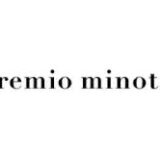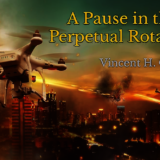 Sure, I could have titled this post “My Precious” and maybe that’s what you were thinking this was going to be about. It’s not.
Sure, I could have titled this post “My Precious” and maybe that’s what you were thinking this was going to be about. It’s not.
What it’s about, is (a) next week I’ll be attending the World Fantasy Con with (b) what looks to be (shaping up to be) a major art show and therefore (c) another opportunity for hundreds of potential art buyers to be faced with a major decision (i.e., a decision with important consequences).
Next week, those potential buyers will be faced with original works (in a variety of mediums) as well reproductions of original works. Which ones will they buy? How will they decide? Which ones SHOULD they buy?
THE PREMIER STATUS OF OOAK’S (*one of a kind)
If you are an art lover on a limited budget, then I can practically guarantee that at some point in your life you will be tempted to buy a contemporary lithographic print or reproduction of an original painting or (today) an original digital print. I can also tell you, as a long time collector, that—for the good of your collection (whether your motives are aesthetic or mercenary) you should resist the urge. I know there will be many people reading this post who will disagree with me. Especially those artists who are creating those prints, or those reproductions, or (importantly) those “original digital prints”
Buying OOAK art isn’t easy. It takes courage and conviction to expose your personal tastes. It also usually takes alot more money. But not always. You’d be surprised how inexpensive sketches and drawings can be! Mainly: It’s just easier for beginning collectors to buy reproductions of existing works, because there’s little risk involved. Prints are easy to find, and relatively cheap, so if you make a mistake and end up not liking it, you haven’t gambled much. Trouble is . . .
Just as there is a separation between the ‘fine art’ establishment and associated academic institutions between what some critics call the “hobbyist” and “professional” markets when it comes to tendencies to rank art by medium, there are similar differences when it comes to judging the worthiness of art based on “technique” vs. content. These tendencies frequently harden into dogmatism, where both artists and collectors become concerned with what is “real art” and what is not. Does the contemporary fine art world care if something is a painting, photography or digital print? No. Does it unblinkingly label buildings wrapped in sheets “art?” Yes. 🙂 But outside that rarified world, people do care. And, in that world, the world “we” (as collectors of SF/F art or “imaginative realism”) inhabit, while there isn’t alot of value being placed on dead fish in formaldehyde, the value isn’t being placed on limited edition prints, either.
Moreover, the dearth of terms available to adequately describe original digital art are adding to its lower ranking, and the traits that give original digital prints their distinctive look are precisely the ones which diminish their value as “real art.”
THE ISSUE OF AUTHENTICITY
“Let the buyer beware” is not a phrase anyone wants to hear—it traditionally has been associated with the antiques world, where authenticity is a concern, and buyers must rightly be cautious. This is not a phrase associated with contemporary illustrative art, however. The challenge has never been finding authentic items, nor even a good supply of them (illustrative art is plentiful). Rather, it has always been a matter of finding what experts call “meritorious items”—those that are of highest, one hopes extraordinary, aesthetic quality. With digital art, however, the phrase now becomes useful. It’s not so much the question of “uniqueness” (originality of the work) but rather the medium here, that is problematic and lends itself to unscrupulous use and difficulty in authentication.
It is truly rare to find digital originals that are one of a kind, and not one of a limited editions,but common to find a ‘one-off’ that’s just a different “state” of the same image. That is to say, that it is the only ONE that is 9″ x 12″, but there is another ONE that is 11″ x 14″, and ONE that is 12″ x 16″ and so on and on….where each – it is true – is “one of a kind”? This is legal, but doesn’t that practice violate the spirit of what is meant by “one of a kind”? And just as it’s rare to find original digital art that is not produced in a multiple edition, it’s also all too easy to confuse MULTIPLES of original digital works, with MULTIPLES of reproductions of watercolors, oils or drawings or manipulated photographic works, when such works are signed, numbered, and dated. How even are we to determine who the creator was, if the work was commissioned for publication, and pixels can be rearranged at the will of an art director? And, perhaps most frightening, fears regarding authenticity are being replaced with “viewability” or “accessibility” or “playability”. The questions surrounding the storage, access, archiving of digital art are many; librarians across the globe are meeting as I write this, trying to figure out the answers. In short, if you care about the long term value and permanence of what you collect – buying anything that’s purported to be “one of a kind” that isn’t hand-painted is problematic….at this point in time.
OWNERSHIP
Finally, another argument for OOAK’s is that a large part of the joy of collecting is being able to say “That one is mine.” (and no one can have it) A similarly large part of the pride of institutions and museums comes from being able to say the same thing “those things are ours.” (and no one else has them) The same concept holds true for anybody who has ever made something with their own hands. Whether it’s a cake, a wheelbarrow or a work of art, if you made it, and you think it’s good, you are happy to say, and with some pride “That one is mine.” (and like no other) Claiming ownership of something made by hand is a very powerful concept, and has been with us for as long as we have been literate – and possibly even before then, if we interpret those outlines of hand-prints in caves to be the mark of a human wanting to advertise the fact that they were ‘there” and “did that”. Go back to the early days and you’ll find the earliest forms of signatures, “_____ fecit” (Jane made it) on sculptures, on pots, and so on – wherever a creator was proud of their work and wanted others to know who was responsible for it. That kind of pride in ownership is difficult to muster whether you are a collector, pointing to #251 in an edition of 2500, or (I’ll bet) the artist who had to sign that #251 of 2500, with 2249 left to number and sign.
PUTTING VALUES ON ART
I am not saying there is no value in multiples (original or repro). I am saying there is value of a different kind. A value that puts a higher premium on image than monetary worth. Many, many people get vast enjoyment from IMAGES of artwork that – in their original form – are beyond their means to acquire. Not just Rembrandts, Vermeers, Picassos – but Parrish, Rockwell, Whelan, Bonestell. They buy them from Museum stores, order them online from print distributors, galleries and individual artists . . . and are happy to be able to look at them on their walls. Decorative value – there’s nothing wrong with it. But if you are interested in artistic value (aesthetic or monetary) then at some point you must make the leap. You come to realize that anything OOAK is better than a multiple, and made by hand is better than made by machine. That is my bias, and one that is supported by values held by other collectors, as well as in prices realized in the marketplace.
By analogy: it’s like the difference between reading an eBook, reading words on a screen – vs. words on a page. In the same way that most eBooks offer a second-class reading experience compared to holding a ‘real’ book in your hands – most reproductions and prints can’t compare with the visual experience of original art.
Next week, at the World Fantasy Convention, art lovers of all stripes will have the chance to make this decision on their own. There will be some very difficult choices to make. Some will choose to buy 5 computer prints, reproductions of final paintings, for the same amount of money that it would take to buy one original prelim, sketch or drawing. I’m not going to stop them, and I won’t say it’s wrong to opt for the prints, but I do think it’s important to consider the ramifications of that choice. In that hierarchy of what we value and hold most dear – it’s unique works of art made by hand (including the printing) that are at the top. Original art holds its value over time, and is what you hand down to your children. Every recent signature sale at Heritage Auction Galleries has offered a number of original prelims by artists such as Bonestell, Emsh, Finlay, and others. Even works by the guest of honor, Les Edwards, has sold at public auction. But no multiples, lithographic or otherwise – nor will they be offered any time soon. It’s something to think about, when deciding what to put on your wall. Are you ready to take the plunge? Are you starting to crave a “one and only” of your own? 🙂
Next week: I will report on the convention art show and for the artists’ sakes, hope for good sales – in both categories !










